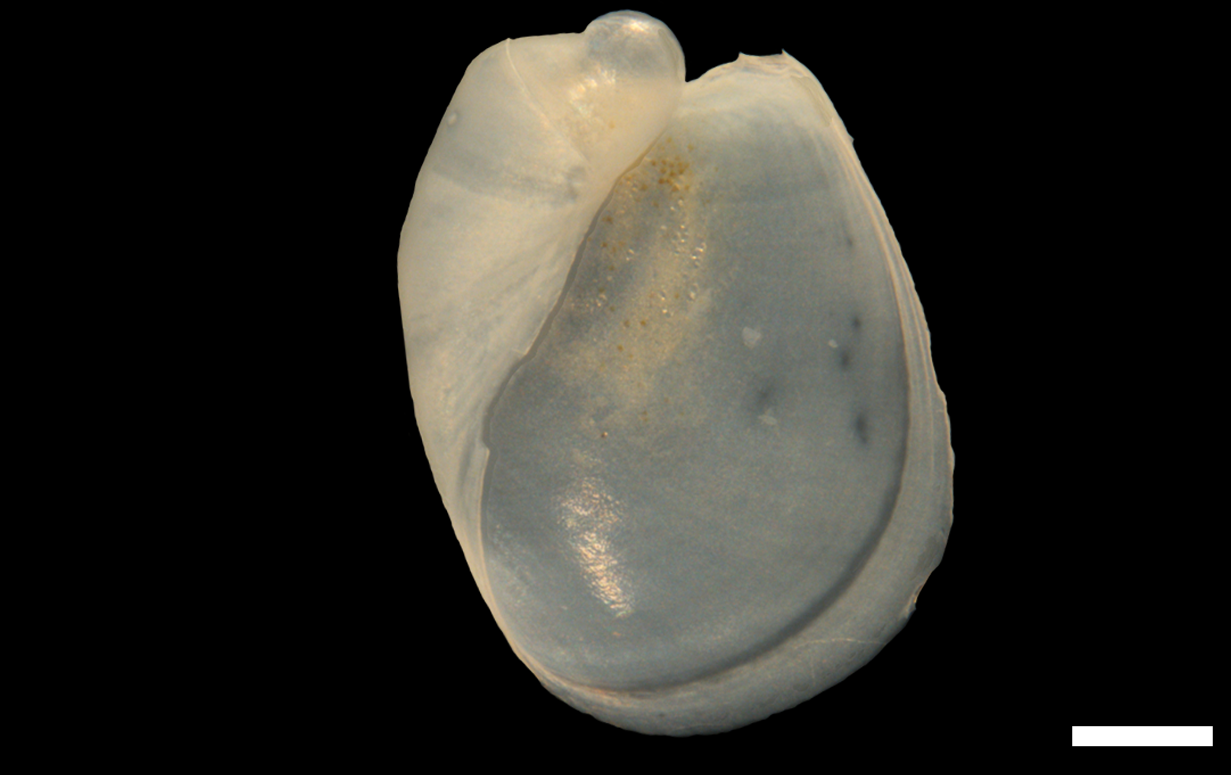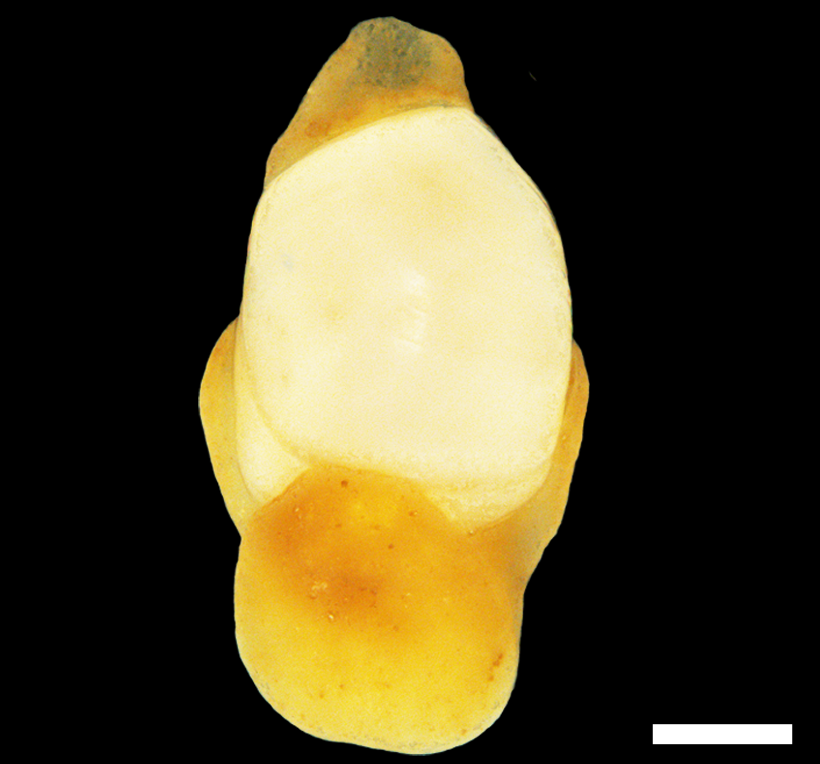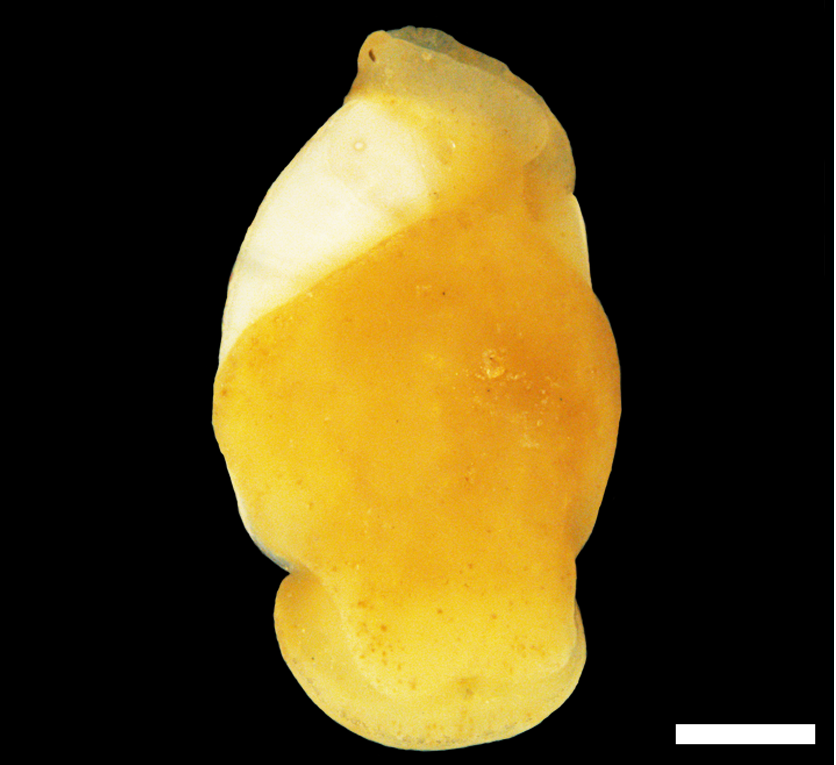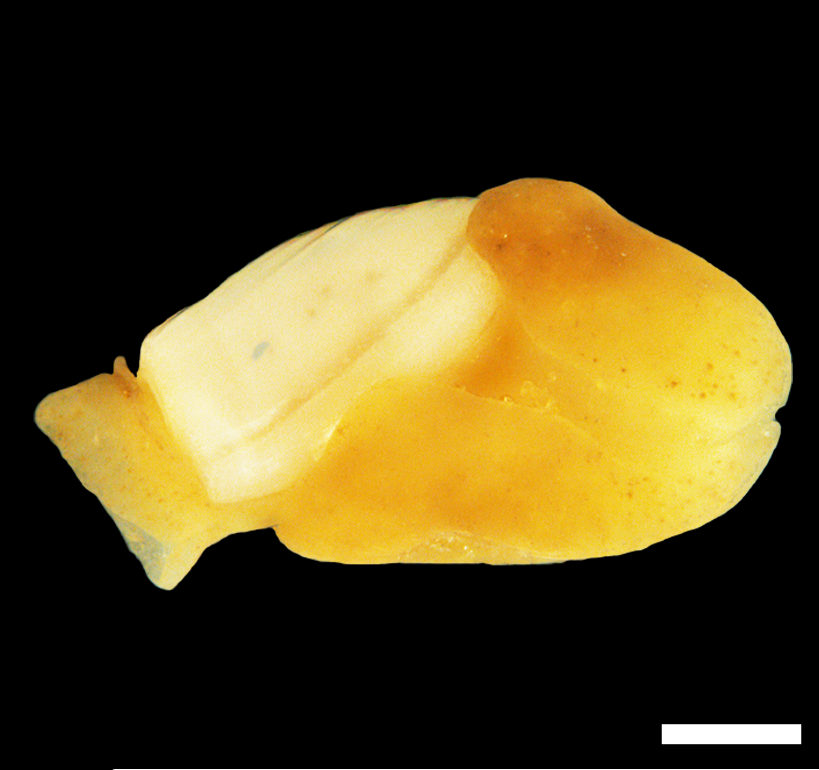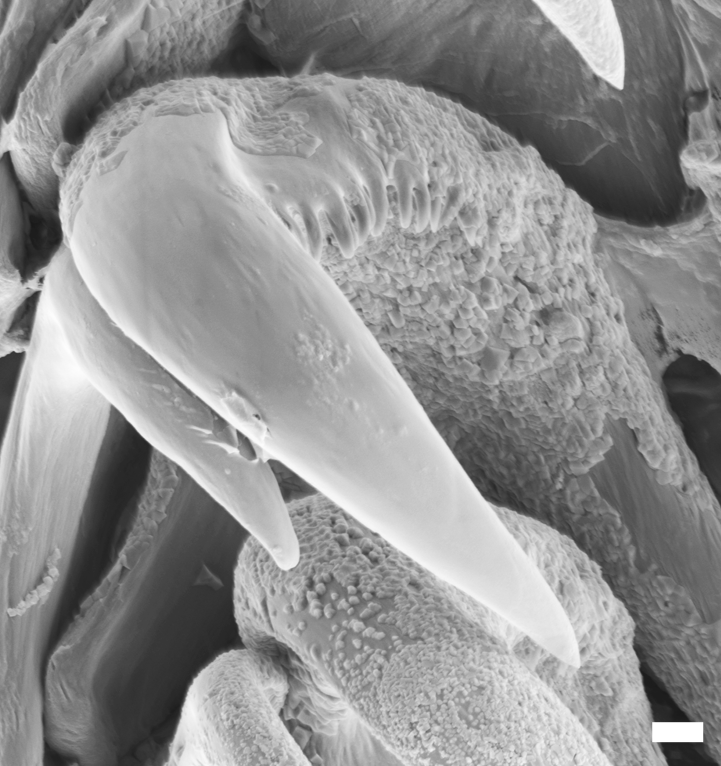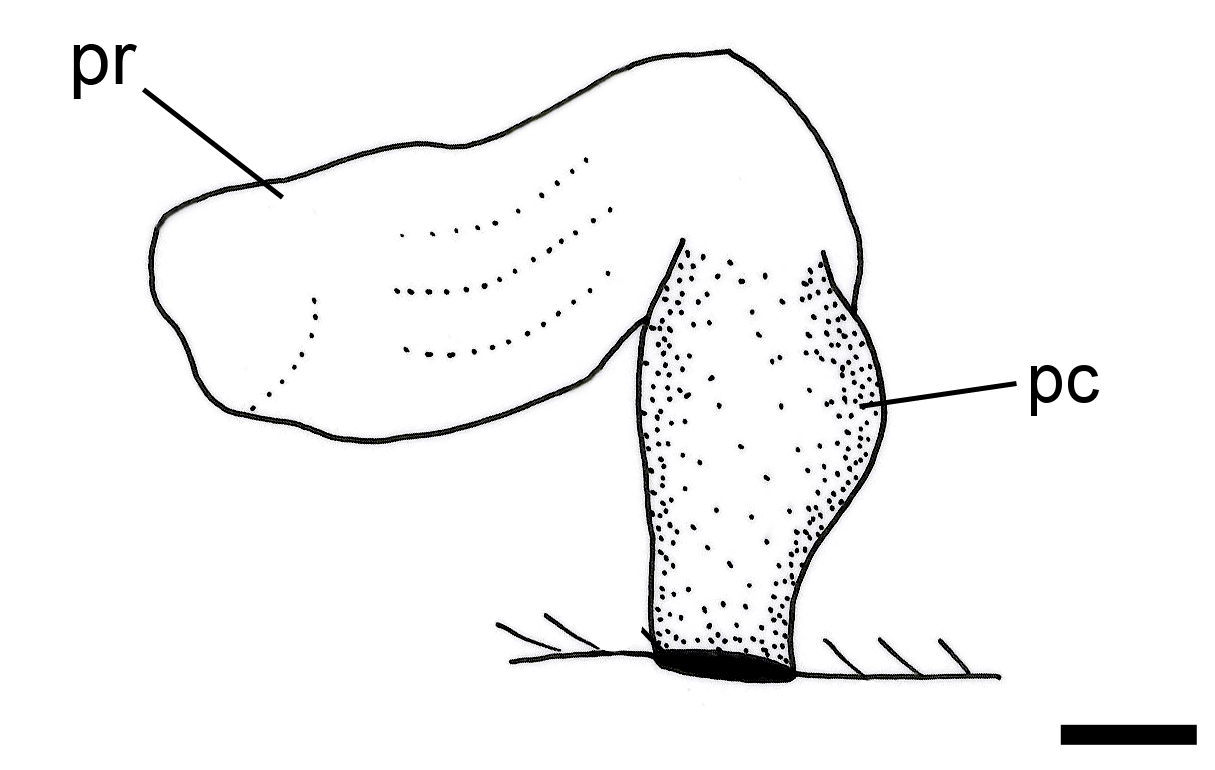Philine denticulata
Shell description
The shell is thin and external with a squarish-oval shape. The coloration can very between white to transparent. The shell surface is largely smooth, except for a keel (raised edge) on the rear part of the shell. The opening of the shell is wide and the upper outer edge is usually flat with two small spines at the end of the keel. The top (apex) of the shell is slightly raised from the flattened edge. The shell is slightly umbilicated. The size of the shell varies between 1–1.5 mm
Animal description
The body is yellowish with brown dots in preserved animals. The tissue covering parts of the shell (mantle) forms a frill at the rear part of the shell. The head shield narrows towards the back, with no middle groove. The larval kidney is visible through the shell. There are side extensions of the foot (parapodial lobes) and an extension of the mantle under the snail (pallial lobe).
Anatomy
The radula consists of 12 rows of teeth with one outer lateral tooth and one inner lateral tooth on each side. The central (rachidian) tooth is absent. The outer lateral tooth is curved with round tips and a broad base. The inner lateral tooth is curved with rounded tips and a brad base, the inner edge is denticulated. The gizzard is rounded and lacks gizzard plates and is not surrounded by strong muscular fibres. The male reproductive system consists of a short, thick, flattened prostate emerging from tubular penial sheath.
Ecology
Found on sand, shell-gravel, mud, and occur in high densities on silty sand. Usually lives in sub tidal waters but has been found in the intertidal. This species has an annual life cycle and spawn from May to August. The spawn consist of a round gelatinous masses with eggs.
Geographical distribution
Occurs in Norway from Ullsfjord (69°35′N) southwards to Møre and Romsdal (62°10′N). Also occurs around the Faeroe Islands, Denmark, the British Isles including Shetland, and the Mediterranean Sea.
References
Ohnheiser LT og Malaquias MAE (2013). Systematic revision of the gastropod family Philinidae (Mollusca: Cephalaspidea) in the northeast Atlantic Ocean with emphasis on the Scandinavian peninsula. Zoological Journal of the Linnean Society 167(2): 273-326. DOI: 10.1111/zoj.12000.
